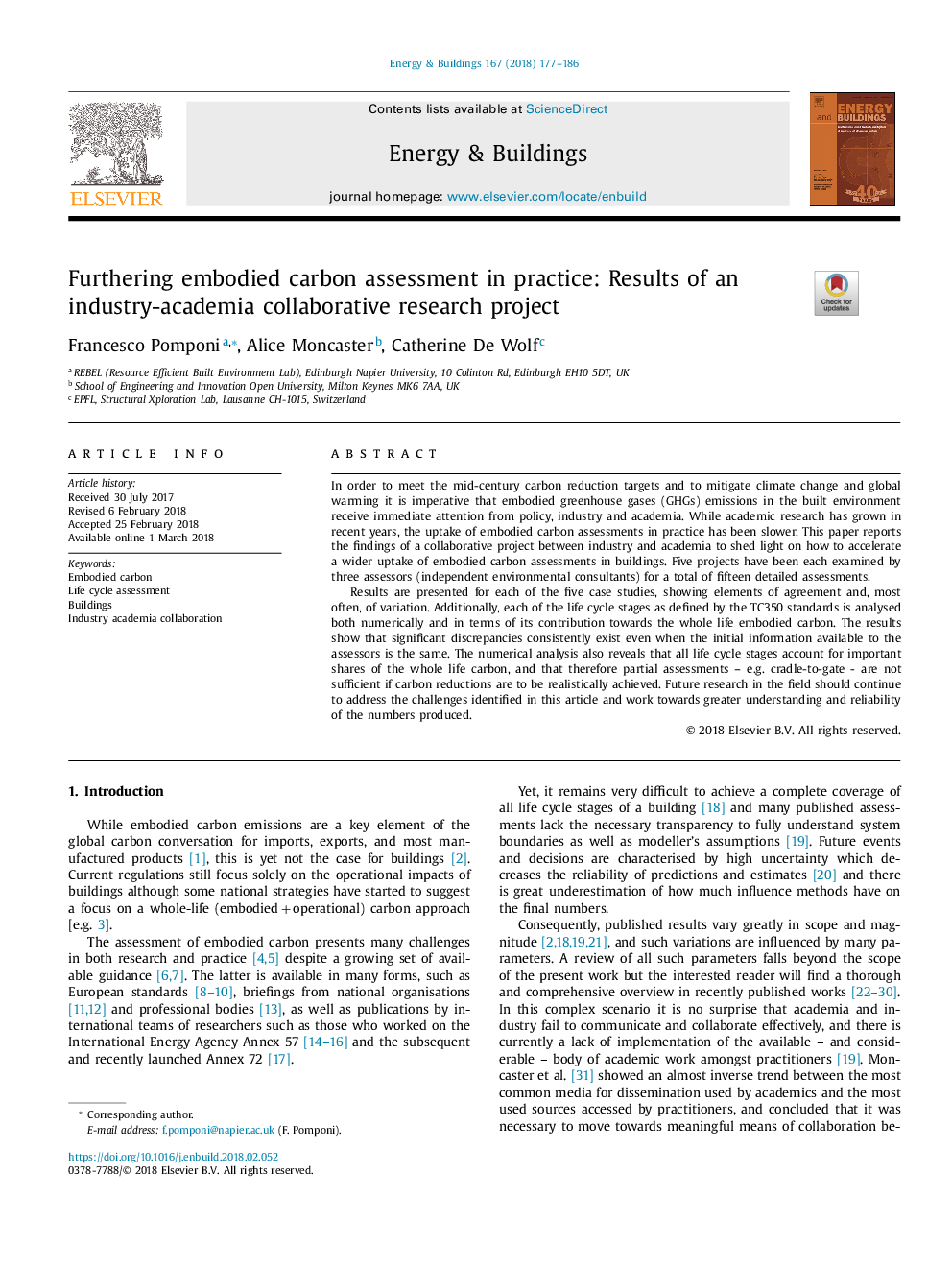| Article ID | Journal | Published Year | Pages | File Type |
|---|---|---|---|---|
| 6728335 | Energy and Buildings | 2018 | 10 Pages |
Abstract
Results are presented for each of the five case studies, showing elements of agreement and, most often, of variation. Additionally, each of the life cycle stages as defined by the TC350 standards is analysed both numerically and in terms of its contribution towards the whole life embodied carbon. The results show that significant discrepancies consistently exist even when the initial information available to the assessors is the same. The numerical analysis also reveals that all life cycle stages account for important shares of the whole life carbon, and that therefore partial assessments - e.g. cradle-to-gate - are not sufficient if carbon reductions are to be realistically achieved. Future research in the field should continue to address the challenges identified in this article and work towards greater understanding and reliability of the numbers produced.
Related Topics
Physical Sciences and Engineering
Energy
Renewable Energy, Sustainability and the Environment
Authors
Francesco Pomponi, Alice Moncaster, Catherine De Wolf,
